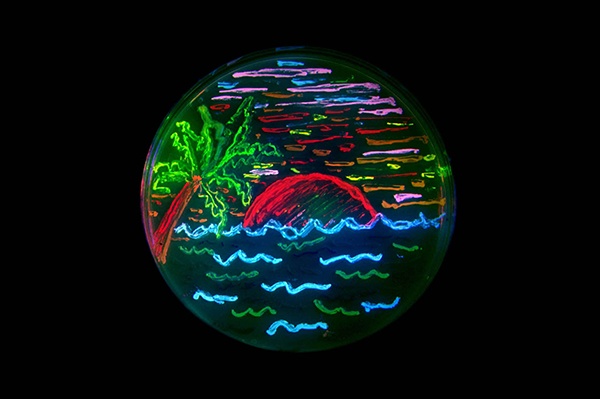In Part 1, we learned about the organisms behind TVC counts and the method of analysis. This week we’ll look at when it’s appropriate to use TVC readings in building water safety and what the readings can tell us about the condition of our water systems.
What can TVCs tell us about our building water systems?
TVC counts can be comprised of bacteria, yeasts and moulds. The “total” part of the TVC name refers to the counting method i.e. the result of the test is the total number of all visible colonies on the plate. This can be slightly misleading as the actual number of colonies grown on any dish only represents a small proportion of the viable cells within the sample.
It is generally accepted that the presence of heterotrophic bacteria in drinking water is not a threat to public health. There are examples of heterotrophs that may, given the opportunity, act as opportunistic pathogens and these can be associated with nosocomial (hospital acquired) infections, including wound infections, urinary tract infections, post-operative infections, respiratory infections, and infections in burn patients.
Although some pathogenic bacteria are heterotrophs, it is important to understand that the majority of heterotrophic bacteria are not pathogens. As such, elevated TVC counts are not seen as an indicator of the presence of harmful / pathogenic organisms, although high levels of TVC may indicate the possibility of higher levels of endotoxin* than might otherwise be expected.
On the whole TVC readings are considered to be a useful indicator of the overall bacterial quality of water for treatment purposes. They are used by water supply companies to assess the effectiveness of water treatment and the condition of the distribution network. TVC counts are also used in the management of swimming/hydrotherapy pools, spa pools and cooling towers.
In fact, they may be used anywhere that samples are taken regularly to provide an indication of changes in the level of microbial activity. It should be noted that there will be natural seasonal variations, with the highest counts being recorded during and immediately following the warmer months.
*Endotoxin is a potentially harmful chemical released when gram-negative bacteria are killed.
When to use TVCs in hot and cold water systems
The Health & Safety Executive’s HSG274 Part 2 Technical Guidance advises us that microbiological monitoring of domestic water supplies originating from the town mains is not normally required, unless a risk assessment or monitoring indicates there is a problem. The risk assessment for systems supplied from other sources such as boreholes, springs or other private water supplies should consider whether any sampling is required.
In healthcare settings we are guided by the Department of Health’s HTM04-01: Safe water in healthcare premises – Part B: Operational management which states that TVCs will only be required “where there are taste or odour problems”. However, it goes on to say that “If performed, TVCs may be used to analyse trends” and that samples “taken before and after disinfection… can give an indication of the efficacy of a disinfection procedure”.
Combining both these pieces of guidance suggests that TVC monitoring could play an important role in the medium to long term management of hot and cold water systems with persistent difficulties, allowing informed decisions to be made regarding timely remedial interventions prior to the detection of pathogenic organisms.
Gradual Increases
Gradual increases over time indicate deterioration in the condition of the plumbing system. The World Health Organisation (WHO) has reported that numbers of Aeromonas bacteria, a common waterborne heterotroph, increase as a result of the accumulation of biofilm influenced by temperature, availability of organic carbon and degree of stagnation.
These conditions are known to also promote the growth of Legionella and other pathogens and, whilst we must be clear that the published guidance tells us there is no correlation between TVC readings and the presence of Legionella, it is fair to say that where TVC counts are persistently elevated in relation to control readings, or where they are seen to increase uncontrollably following system disinfection, there is good reason to suspect that conditions may also be conducive to the growth of pathogenic organisms.
Sudden Increases
A sudden unusual increase in TVC readings can warn of a pollution incident. This could be gross contamination of a storage or header tank or a cross-connection to a non-potable water conveyance system, such as greywater, rainwater, fire-fighting systems, heating systems or wastewater.
Action Levels
Various sources have suggested a range of guide levels for TVC readings over the years. At the present time, however, all reputed sources stipulate that the readings should demonstrate no abnormal change “i.e. measurements should show no sudden and unexpected increases as well as no significant rising trend over time.”
What TVCs don’t tell us
It is important to understand the limitations of TVC testing. TVC testing does not:
- Provide information about the presence or absence of pathogenic organisms;
- Indicate whether or not water is safe for human consumption;
- Offer a less expensive alternative to Legionella Sampling or other pathogens where the latter is required to comply with HSG274 or HTM04-01.
For more information about Water Hygiene Centre and our independent advisory services click here.
Editors Note: The information provided in this blog is correct at date of original publication - January 2018.
© Water Hygiene Centre 2019









